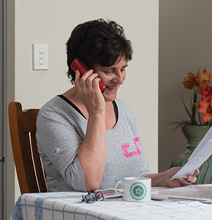On 18 July 2007 the Commission issued a Communication on ‘Tackling the pay gap between women and men’ which identifies four areas of action to tackle the problem. In addition to the traditional support for the exchange of best practice between EU-27, the Commission is set to tackle inequality in pay through ensuring better application of existing legislation and exploring ways to improve it as well as its implementation. “Changes to the Community legal framework could be examined to ensure that direct and indirect discrimination based on sex is excluded, in particular from the systems used to set pay. For this, it might be envisaged to reinforce provisions aiming at eliminating those elements of pay systems which result in gender discrimination”, states the Communication.
The Commission also plans to exploit the European Strategy for Growth and Jobs to the full. It urges Member States to set objectives and national deadlines for reducing the pay gap, and asks them to include any specific measures implemented in their national reform programmes. Last but not least, the Commission also wishes to encourage employers to respect equal pay through the promotion of social responsibility.
The factors that explain the gender pay gap, in particular part-time working, career patterns and types of occupation and employment contribute not only to keeping women’s income lower than men’s during their working life, but also to a reduced entitlement to benefits from occupational pension schemes after retirement. Women with the lowest pensions benefits are at a high risk of poverty. In 2003, the at-risk-of-poverty rate (after social transfers) in the EU was 5 percentage points higher for older women (20%) than for older men (15%).
Despite advances in women’s employment in recent years, Europe’s labour markets and workplaces remain largely unequal and the gender pay gap is still prevalent’, observed AGE Director Anne-Sophie Parent. ‘Most Member States’, she continued, ‘propose to rely more and more on 2nd and 3rd pillar pension schemes to ensure an adequate replacement rate but very few do something to tackle the wide range of inequalities faced by women which include the pay gap in addition to unpaid carer’s breaks, labour segregation which results in women having less access to good quality private pension schemes, gender-based annuity rates etc. AGE is developing a policy statement in response to this Communication.
Statistics show that the pay gap grows with age, education and years of service – differences in pay are over 30% in the 50-59 age group and 7% for the under-30s; it is over 30% for those with third-level education and 13% among those with lower level secondary education and for workers with over 30 years of service in a company it is as high as 32%, while it is 10% lower (22%) for those who have worked in a company for one to five years. The pay gap will feature as one of the main themes for the Commission’s activities on next year’s International Women’s Day on 8 March 2008.
Useful documents:
Communication on Tackling the pay gap between women and men
Commission study on The gender pay gap: origins and policy responses






